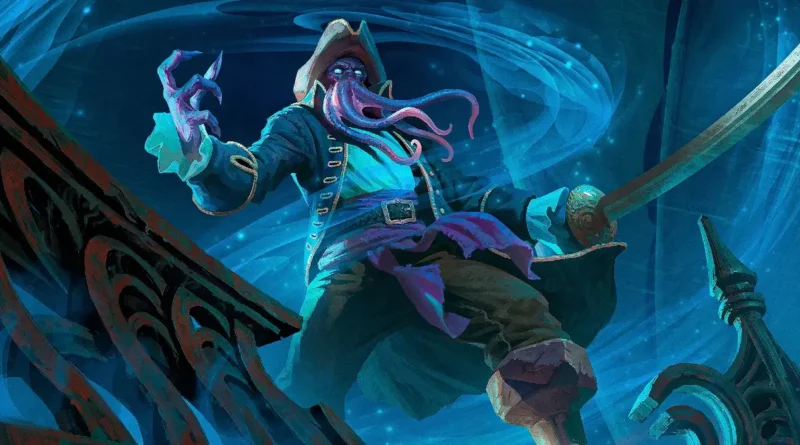Top Dimir Commanders in 2025
Blue and black together make for a sneaky, controlling mix. Most Dimir EDH decks are built to win over time, waiting for the perfect chance to interrupt an opponent’s plan or pull ahead on cards. If you enjoy keeping a low profile until you can make a decisive move, this color combo will feel right at home.
What makes the best Dimir commanders so appealing is their versatility. Some lean into control and card advantage, while others embrace graveyard synergies, ninjutsu tricks, or full-blown mill strategies. There are tribal builds, tempo decks, spellslinger shells – even chaos engines that win using your opponents’ decks instead of your own.
In this guide, we’re looking at some of the best and most unique Dimir commanders in 2025 – picks that stand out for their strength, flavor, and the kinds of EDH decks they can inspire. Whether you’re putting together your first blue-black list or shaking up a favorite build, you’ll find plenty of options to explore.
What Makes Dimir Commanders Unique?
Dimir commander decks thrive on knowledge and disruption. Rather than winning with raw power, they lean on tricky plays, unexpected attacks, and drawing more cards than anyone else. Dimir has plenty of ways to keep you ahead on resources while quietly steering the game in your favor.
Strengths
- Excellent card draw and filtering
- Powerful removal and counterspells
- Access to graveyard recursion and exile effects
- Tricks involving ninjutsu, mill, stealing cards, or denial
- Tons of synergy with instants, sorceries, and evasive creatures
Weaknesses
- Limited access to board wipes or enchantment removal
- Few proactive win conditions – Dimir decks often rely on synergy or combos
- Vulnerable to wide creature boards if they fall behind early
Common Archetypes
- Ninjutsu & Combat Damage Triggers
- Zombies, Faeries, and Horror Tribal
- Graveyard Synergies & Mill
- Spellslinger / Control
- Theft & “Play Their Cards” Strategies
Ninjutsu & Combat Tricks – Striking from the Shadows with Stealth and Surprise
Dimir is the undisputed master of sneaky combat – with ninjutsu, evasive creatures, and combat damage triggers that turn small attacks into huge advantages. These commanders reward you for slipping past defenses and hitting where it hurts, often triggering powerful effects or cheating threats into play.
If you enjoy clever sequencing, unblockable creatures, and turning combat into a card draw engine, these commanders bring the tricks, tempo, and flavor in full force.
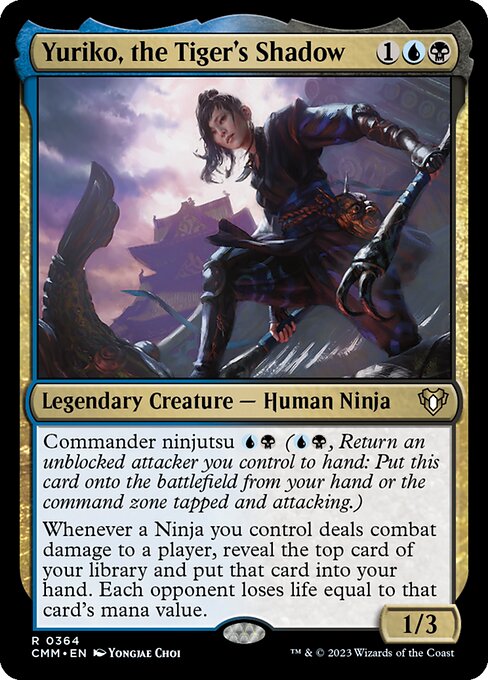
Yuriko, the Tiger’s Shadow
Yuriko is the face of Dimir ninjutsu. Her commander ninjutsu ability lets you swap in from the command zone after declaring an unblocked attacker – no need to pay commander tax. Once she connects, each player loses life equal to the top card’s mana value from your library, which you also draw. That means she turns every hit into a potential fireball and card draw rolled into one.
Yuriko decks thrive on low-cost evasive creatures, top-deck manipulation, and tons of Ninjas. She’s fast, flexible, and beloved for a reason – the ninja queen of EDH.
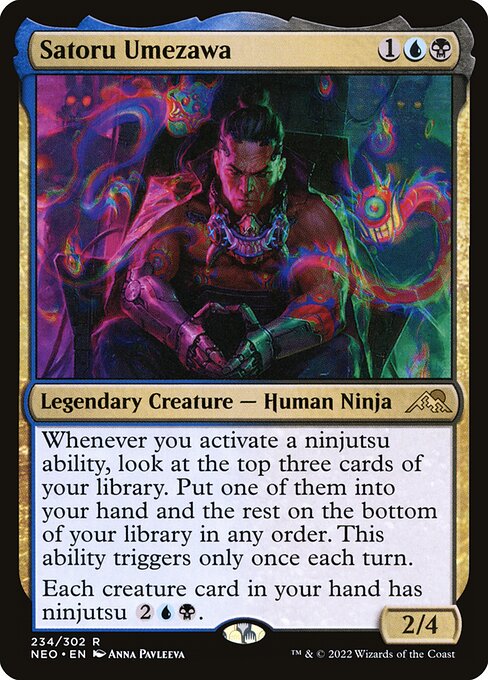
Satoru Umezawa
Satoru lets you give ninjutsu to any creature in your hand – not just Ninjas. That means you can drop a Blightsteel Colossus or Ulamog into play after an unblocked 1/1 connects. On top of that, every time you use ninjutsu, you get to look at the top three cards of your library and put one into your hand.
He’s ideal for players who love cheating big threats into play while maintaining card advantage. Build with evasion, top-end bombs, and a little trickery, and Satoru will keep your opponents on edge.
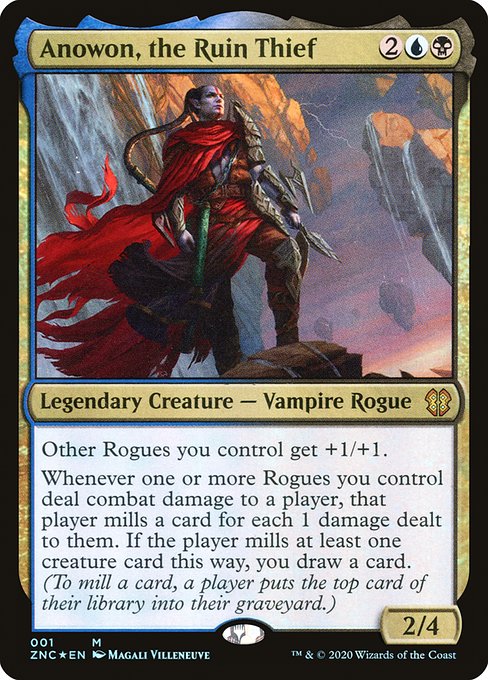
Anowon, the Ruin Thief
Anowon boosts your other Rogues and mills opponents whenever your Rogues deal combat damage. For each opponent who mills a creature card this way, you draw a card. This creates a fast-paced deck that rewards you for attacking early and often with evasive Rogues, pushing damage while fueling your hand.
Great for players who enjoy tribal synergy, mill-based pressure, and drawing extra cards without slowing down.
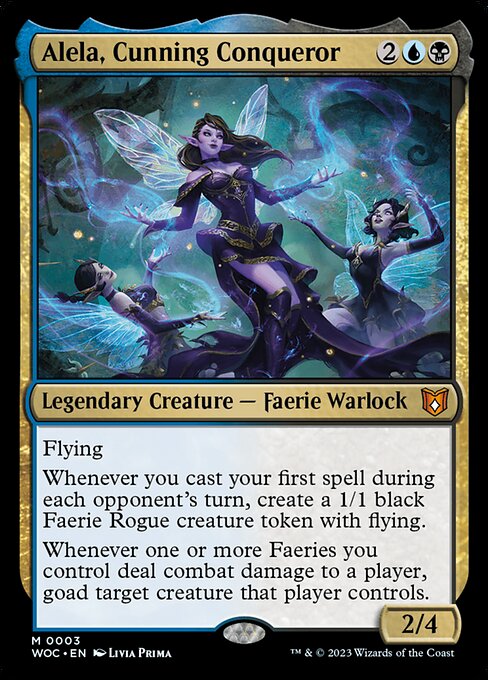
Alela, Cunning Conqueror
Alela pays you for playing at instant speed: your first spell on each opponent’s turn makes a 1/1 flying Faerie, and when your Faeries connect, you goad one of that player’s creatures. That turns chip damage into forced attacks and awkward blocks. Load up on cheap interaction, flash threats, and a light Faerie package to keep the skies busy while you steer combat.
Ideal for players who like tempo-control, politics, and winning with a thousand tiny cuts.
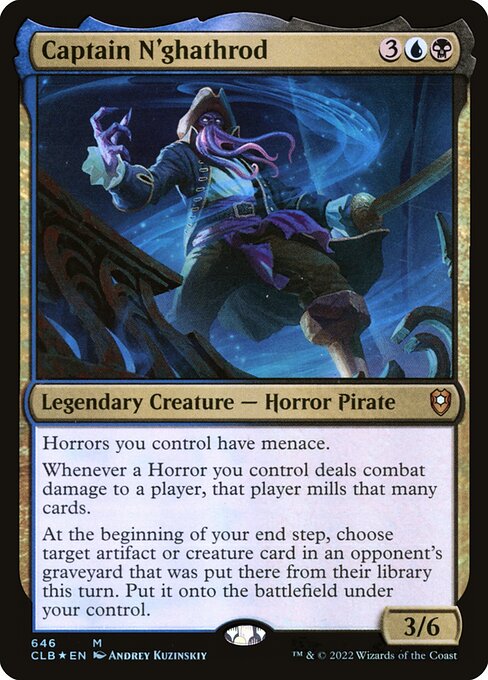
Captain N’ghathrod
Captain N’ghathrod gives your Horrors menace, then mills opponents when they deal combat damage. Even better – you get to steal an artifact or creature milled this way and put them onto the battlefield under your control.
This is combat-based reanimation with a tribal twist. Build with Horrors, mill synergy, and evasion, and you’ll end up with a board full of everyone else’s best creatures and artifacts. Perfect for fans of flavorful tribal decks and sneaky recursion wins.
Zombie & Tribal Synergies – Undead Armies, Dark Tribes, and Overwhelming Swarms
Dimir is home to some of Magic’s most iconic creature types – Zombies, Wraiths, Horrors, Faeries, and Nightmares, just to name a few. These commanders lean into their tribes with powerful synergy, rewarding you for sticking to a theme and going wide, going graveyard, or going grotesque.
If you love flavor-driven decks that scale with their tribe, or you just enjoy watching your graveyard fill up and your board overflow, these commanders will feel right at home.
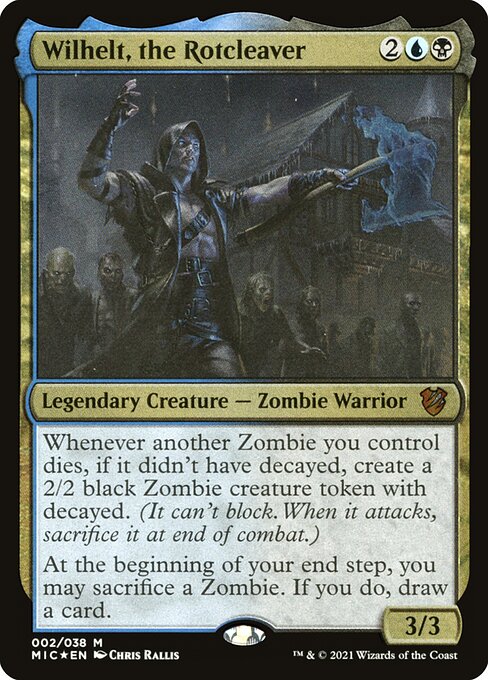
Wilhelt, the Rotcleaver
Wilhelt is the gold standard for Zombie typal. Whenever another Zombie you control dies, you create a tapped 2/2 decayed Zombie token, providing it didn’t have decayed itself. At your end step, you can also sacrifice a Zombie to draw a card. That means constant token generation, built-in card draw, and synergy with death triggers and reanimation.
If you like aristocrats-style gameplay with an undead twist, Wilhelt is your go-to. Efficient, synergistic, and easy to build around.
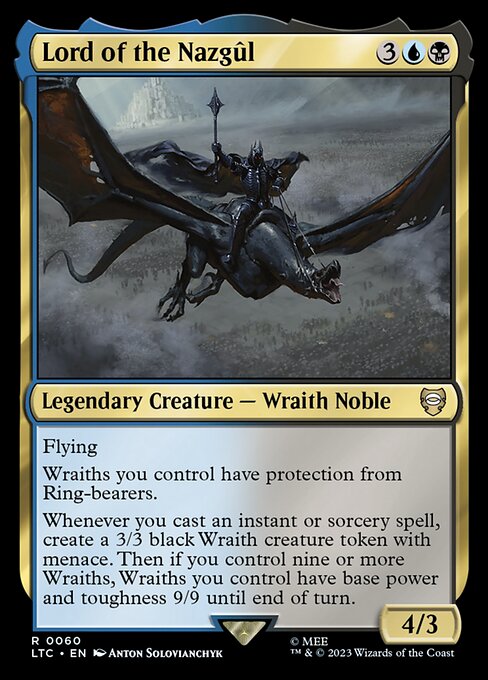
Lord of the Nazgûl
Cast instants and sorceries, make 3/3 menace Wraiths, and once you’ve assembled nine, they swell into 9/9s for the turn. With protection from Ring-bearers and natural evasion, the army closes fast. Lean on cantrips, copy effects, and cost reducers to snowball token production, then swing for the dramatic, one-turn knockout.
Ideal for players who enjoy spellslinger engines that end the game in a single terrifying attack.
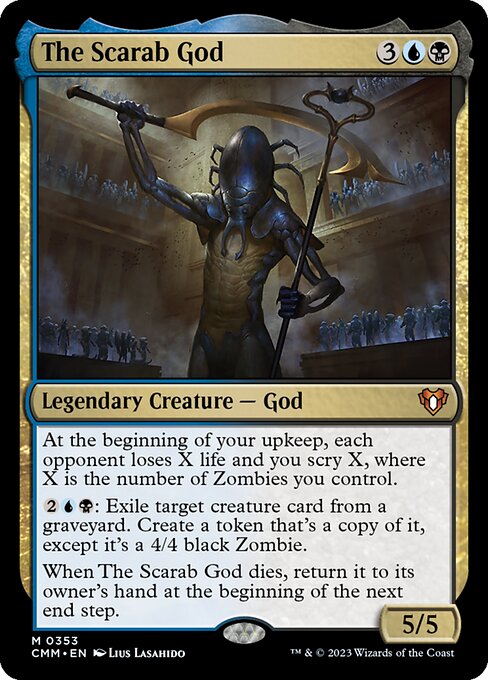
The Scarab God
The Scarab God exiles creatures from any graveyard to create 4/4 Zombies that keep their abilities. On top of that, it drains life and scries at upkeep based on your Zombie count – and when it dies, it returns to your hand instead of the command zone.
This is resilient graveyard recursion at its finest. Build around zombies, big bodies in graveyards, and death synergy, and The Scarab God will grind value all game long.
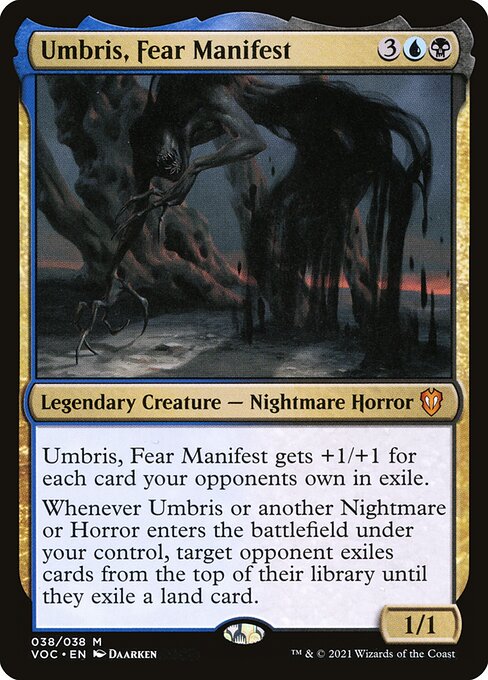
Umbris, Fear Manifest
Every exiled card your opponents own makes Umbris bigger. Play a Nightmare or Horror, and each opponent mills cards into exile until they hit a land. This adds up fast – turning every new creature into a power boost and fueling future exile-based synergies.
If you enjoy weird tribal decks and library disruption, Umbris is a flavorful and formidable option.
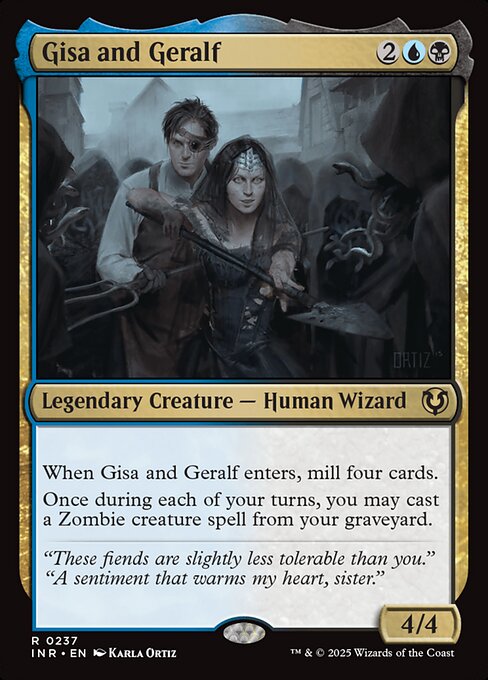
Gisa and Geralf
Gisa and Geralf mill four cards when they enter the battlefield, then let you cast one Zombie per turn from your graveyard. That makes them a value engine for Zombie tribal decks, especially ones that want to self-mill, recur utility creatures, and play the long game.
While less explosive than Wilhelt, they’re perfect for more toolbox-style Zombie brews that focus on recursion and grindy board presence.
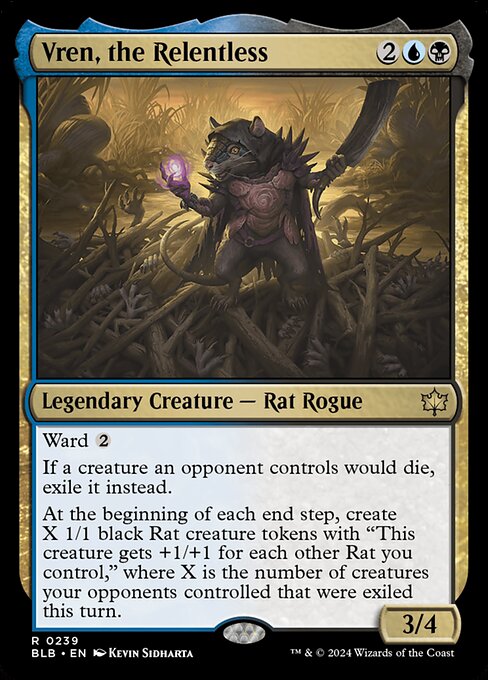
Vren, the Relentless
Vren exiles opposing creatures instead of letting them die; then at each end step you create that many 1/1 Rats that scale off each other. The more things you kill, the bigger the pack gets. Pack efficient removal, edict effects, and sweepers to farm tokens while shutting off graveyard decks.
Ideal for players who like board control that quickly flips into overwhelming pressure.
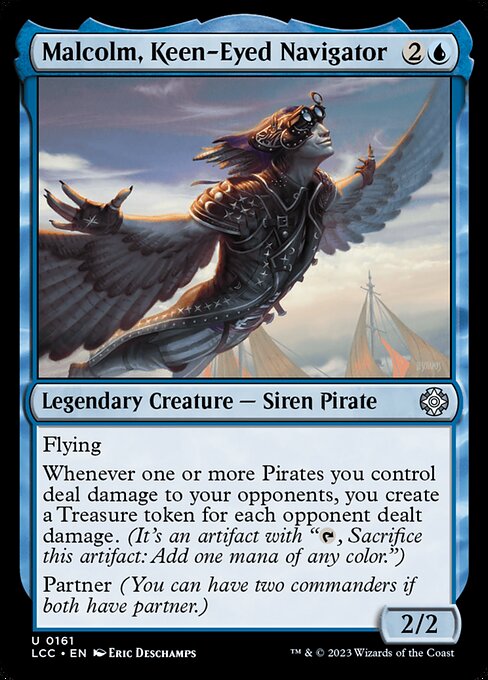
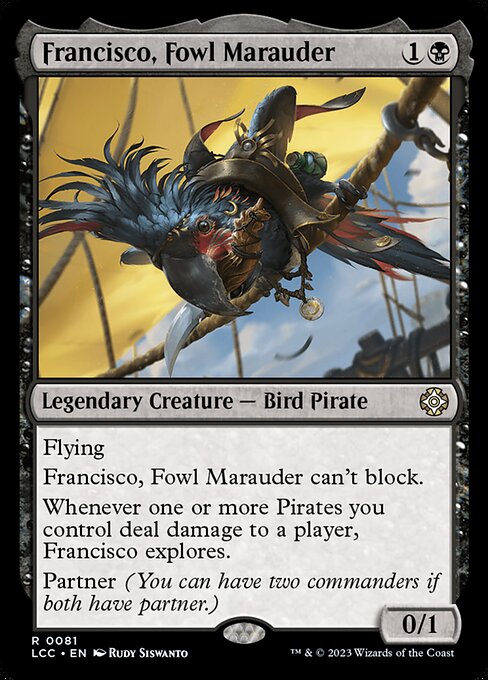
Malcolm, Keen-Eyed Navigator & Francisco, Fowl Marauder
This partner pair turns combat damage into resources on two fronts: Malcolm makes Treasures when your Pirates connect with opponents, and Francisco explores whenever your Pirates hit a player. Evasive bodies, token makers, and extra-combat effects keep the triggers rolling so you ramp and filter into your best plays while the crew keeps swinging.
Malcolm and Francisco are perfect for players who want a fast, tricky Pirate deck that snowballs with every successful attack.
Mill & Graveyard Control – Fueling the Graveyard and Disrupting Libraries
No color pair manipulates the graveyard quite like Dimir. Whether you’re milling yourself for value, exiling your opponents’ cards, or reanimating threats at just the right moment, these commanders turn the graveyard into a second hand – or a weapon. Many also interact with mechanics like Surveil, Unearth, or Descend, offering a wide range of playstyles from combo to control.
If you like long games, resource denial, or crafting graveyard engines that overwhelm over time, these commanders are for you.
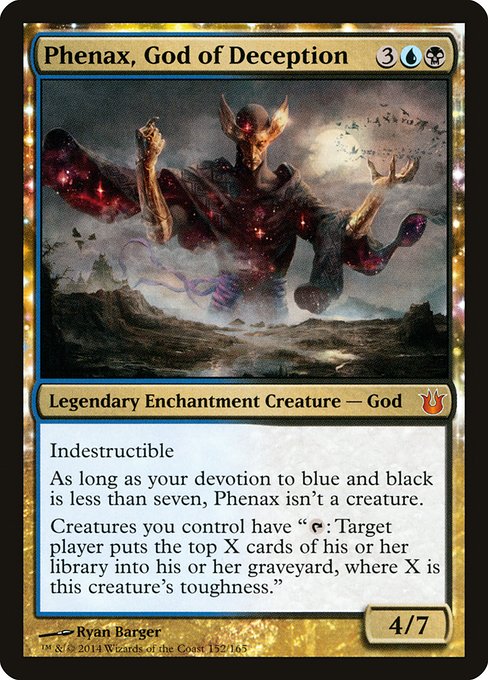
Phenax, God of Deception
Phenax gives all your creatures the ability to tap and mill an opponent for cards equal to their toughness. That means defenders, high-toughness creatures, or token armies all become mill engines. As an indestructible god, Phenax is hard to remove and ideal for grindy, control-heavy metas.
He’s great for players who want to win slowly but surely by emptying libraries while hiding behind a fortress of blockers.
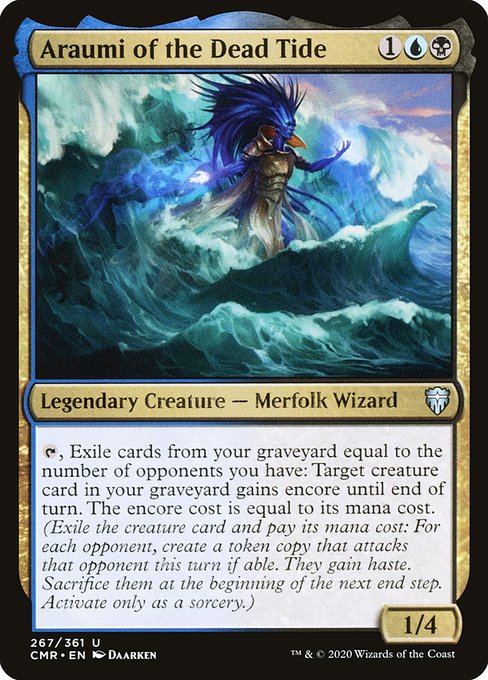
Araumi of the Dead Tide
Araumi lets you pay for encore by exiling cards from your graveyard – bringing a creature back for one final attack in each opponent’s direction. It’s like Unearth, but with style. Combine it with ETB or death triggers, and Araumi turns your graveyard into a powerful offensive engine.
A perfect pick for graveyard lovers who enjoy repeatable recursion with a political twist.
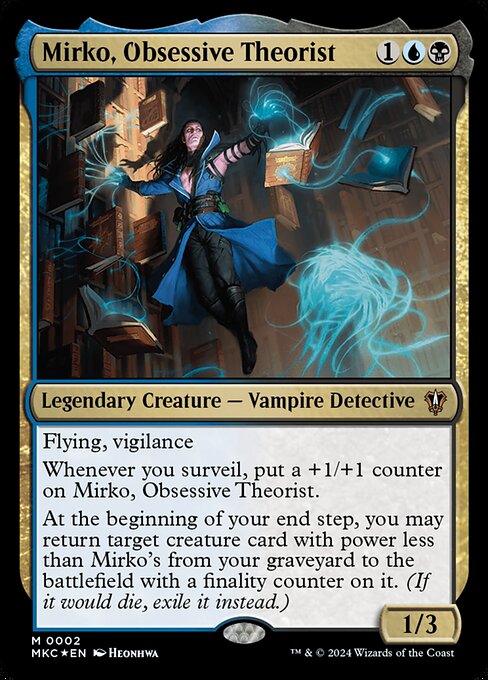
Mirko, Obsessive Theorist
Mirko grows whenever you surveil, and at your end step he can bring back a smaller creature from your graveyard with a finality counter. That’s perfect for looping ETB creatures while your commander gets bigger and safer in combat thanks to vigilance. Play lots of repeatable surveil, self-mill, and cheap value bodies to keep the conveyor belt moving.
An excellent choice for players who love incremental advantage and graveyard toolboxes.
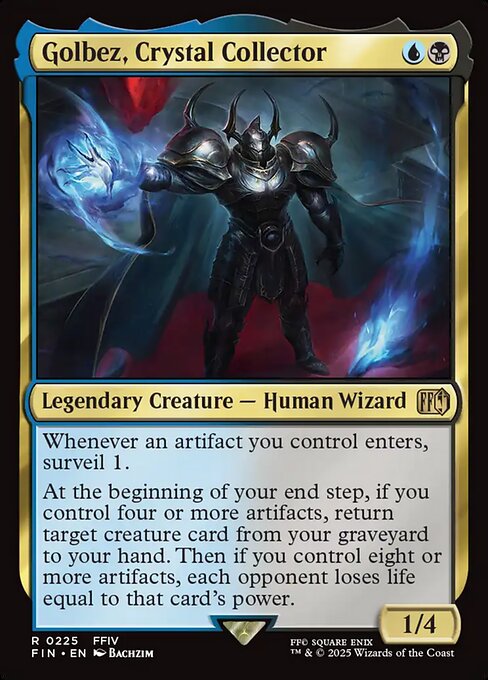
Golbez, Crystal Collector
Every artifact that hits your board lets you surveil, smoothing draws and stocking the yard. At four artifacts, your end step buys back a creature to hand; at eight, each opponent loses life equal to that creature’s power. Treasure, Clues, and Food do heavy lifting here, turning small artifacts into card selection, recursion, and a steady life drain.
Ideal for players who want a grindy artifact game plan with real inevitability.
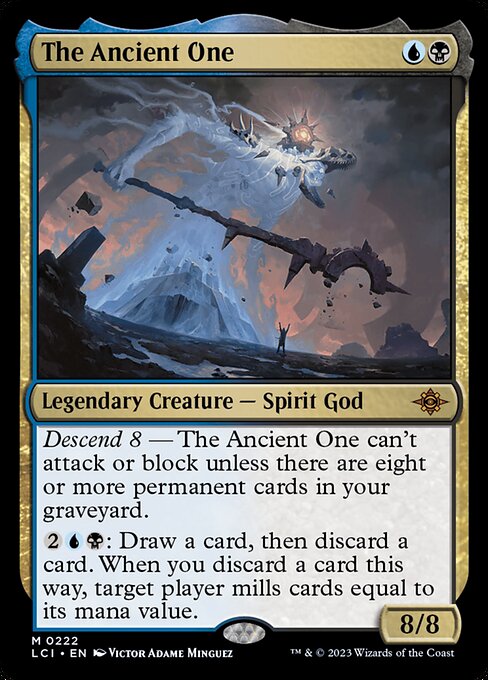
The Ancient One
The Ancient One can’t attack or block unless eight or more permanent cards are in your graveyard – triggering its Descend 8 condition. It’s a risky but rewarding commander for self-mill decks that want a giant payoff once the yard is full. It also has an activated ability that allows you to loot a card and force an opponent to mill equal to the discarded card’s mana value.
Simple, swingy, and surprisingly effective with the right support. Ideal for fans of self-mill voltron or budget brews.
Spellslinger & Control – Commanding the Stack and Outvaluing the Table
Dimir is a powerhouse when it comes to casting spells, drawing cards, and shutting things down. Whether you’re playing draw-go control, slinging instants and sorceries, or leveraging tricky “cast triggers” to steal the spotlight, these commanders are all about efficiency and domination through timing.
If you enjoy winning the long game, playing reactively, and assembling engines that snowball advantage, this section is full of spell-based brilliance.
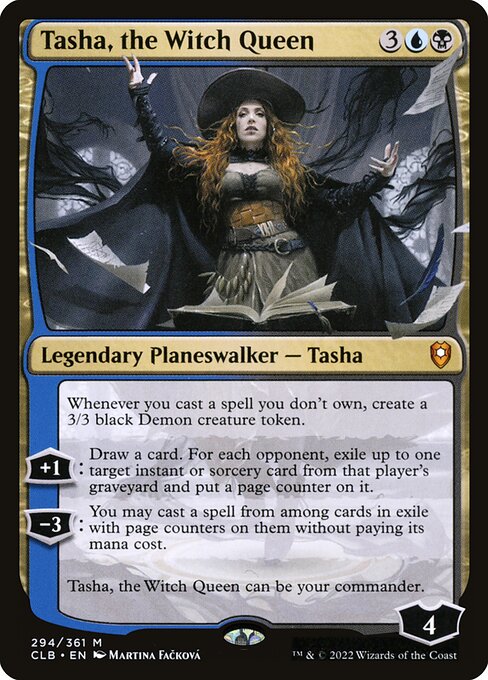
Tasha, the Witch Queen
Tasha rewards you whenever you cast a spell you don’t own by making a 3/3 Demon token. Her +1 lets you draw a card and exile up to one instant or sorcery from each opponent’s graveyard. Her ultimate allows you to cast a spell from among the cards in exile with a page counter, letting you unleash game changing instants and sorceries exiled from your opponents’ graveyards.
Perfect for control players who love graveyard play, value engines, and turning enemy spells against them.
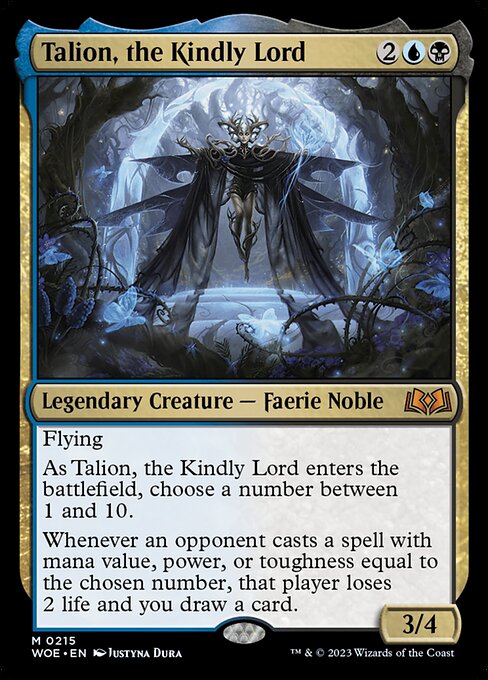
Talion, the Kindly Lord
Talion asks you to choose a number as he enters the battlefield, then punishes opponents whenever they cast spells with that mana value, or creatures with that power or toughness. Depending on the deck, this could result in tons of passive damage or free card draw, especially in lower-curve metas.
He’s a subtle but powerful commander who rewards game knowledge and smart deck building – ideal for those who like passive value and psychological edge.
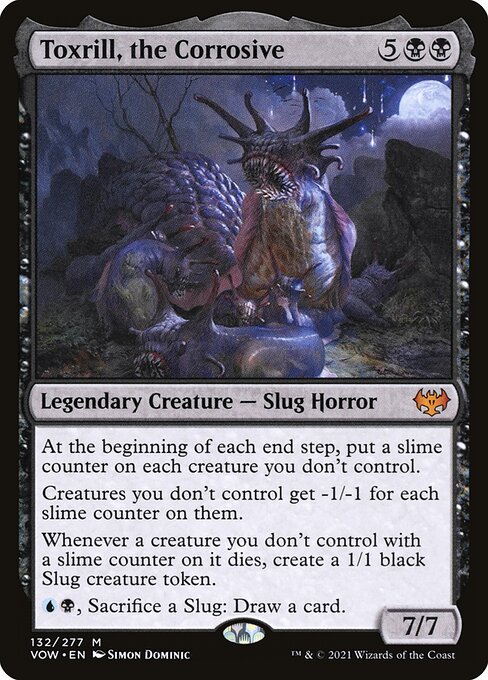
Toxrill, the Corrosive
Toxrill gives all opposing creatures -1/-1 at each end step, slowly withering the board. When opponent creatures die, you create 1/1 Slug tokens, which you can sacrifice to draw cards. He’s an oppressive, grindy commander with huge payoff for patient play.
Best for players who want to control the board, drain opponents’ resources, and win through inevitability.
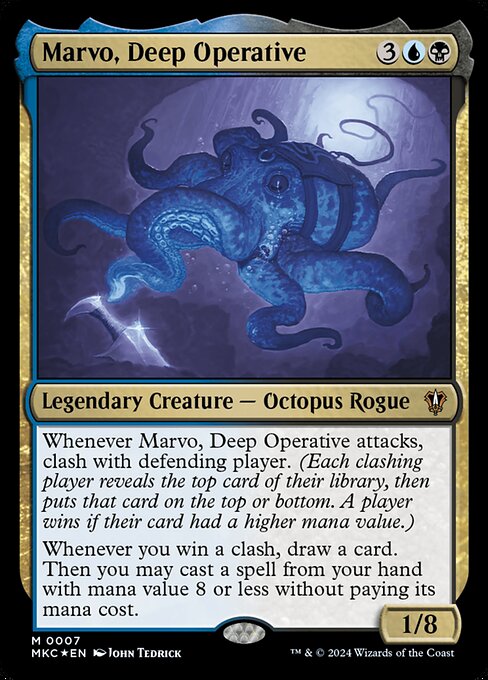
Marvo, Deep Operative
Marvo clashes with opponents whenever he attacks. If you win, you get to cast the revealed spell for free – which means free spells, surprise interaction, and some very odd tempo swings. While clash is unpredictable, the value ceiling is high if built with topdeck manipulation or scry support.
For players who enjoy unconventional spellslinger decks or want something uniquely Dimir.
Other Dimir Commander Options – Offbeat Builds and Underrated Power
Not every commander fits neatly into a well-known archetype – and that’s often what makes them fun. This section highlights the weird, wild, and underexplored Dimir commanders that offer something different from typical spellslinger, mill, or tribal strategies.
If you’re looking to brew something unexpected or explore Dimir from a fresh angle, these commanders are a great place to start.
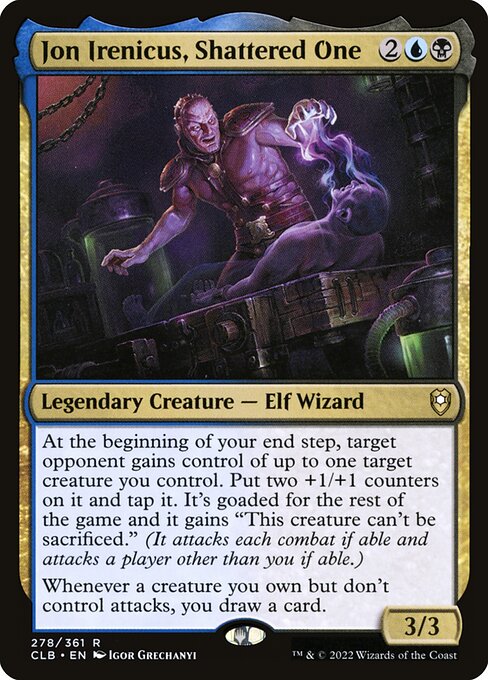
Jon Irenicus, Shattered One
Jon Irenicus gives away creatures at your end step – but rewards you when they attack anyone else with card draw. That means your deck becomes a toolbox of problematic gifts, like Phyrexian Negator or Eater of Days, that turn into weapons in enemy hands… but draw you value either way.
It’s a political shell with a flavorful twist – great for fans of chaos decks, group hug with teeth, or rogue brews that no one sees coming.
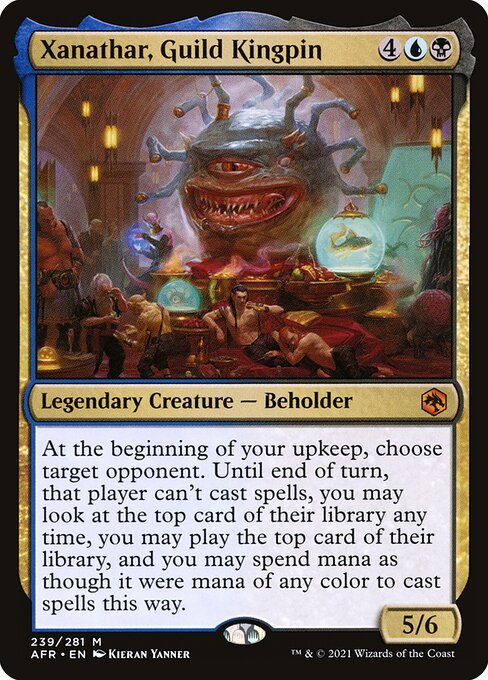
Xanathar, Guild Kingpin
Xanathar lets you choose an opponent at the start of your turn. For the rest of that turn, you may look at and play cards from the top of their library – and they can’t cast spells during your turn. It’s a unique form of hand disruption and resource theft, especially in decks with ramp and manipulation to make full use of your stolen spells.
Ideal for players who love weird interactions, lockdown effects, and using opponents’ cards against them in style.
Conclusion – Why Dimir Remains One of Commander’s Coolest Color Pairs
Dimir commanders cover a lot of ground – you’ll see everything from sneaky Ninjas to graveyard-loving Zombies, control-heavy builds to straight-up theft. Some win by casting your opponents’ spells, some by milling their decks, and others by piecing together combos at just the right moment. Whatever the approach, Dimir tends to reward careful, tactical play.
This color pair is full of powerful engines, clever interactions, and flavorful mechanics – all wrapped in a sleek, shadowy theme. Whether you like blinking in and out of combat, resurrecting armies, or just drawing all the cards, the best Dimir commanders in 2025 give you endless ways to express your playstyle.
So pick your favorite villain, rogue, or slime lord, and start brewing – the next great Dimir deck is only a scheme away.

